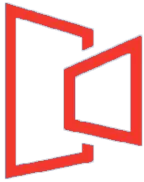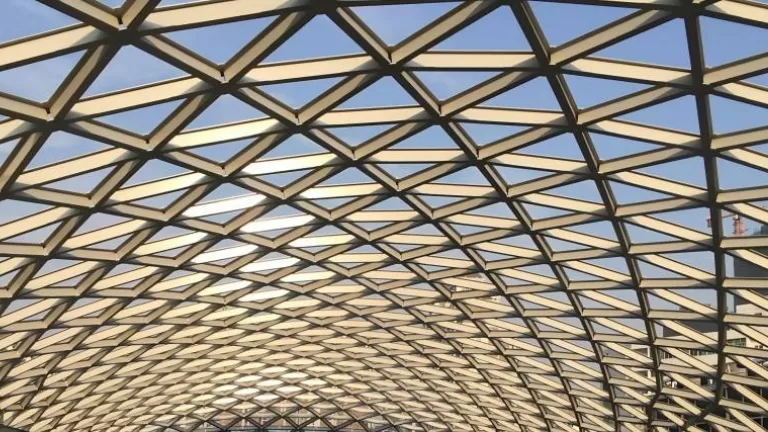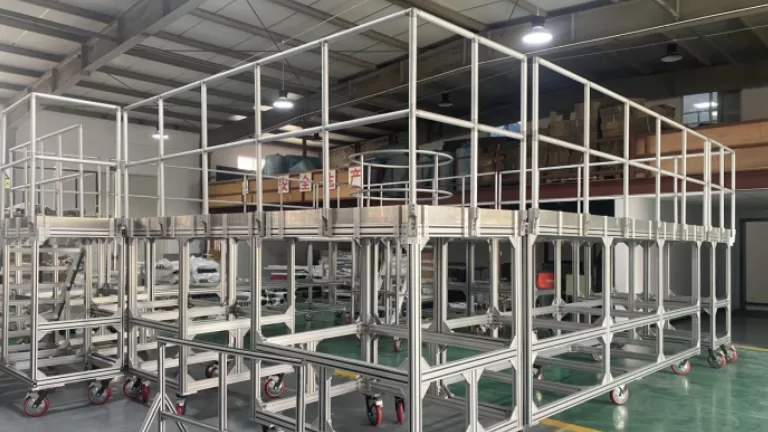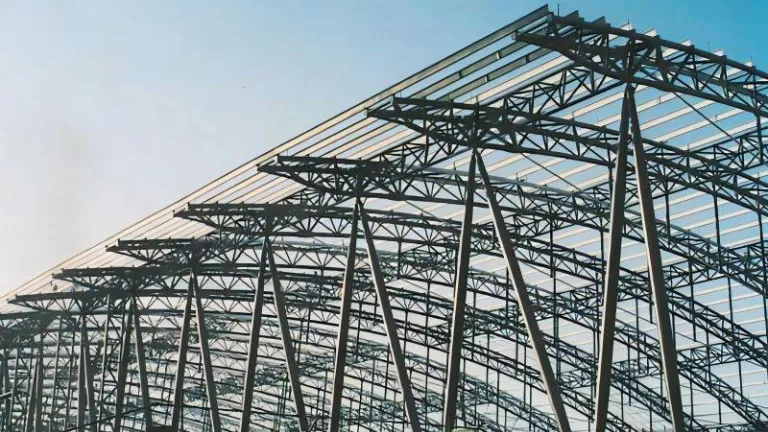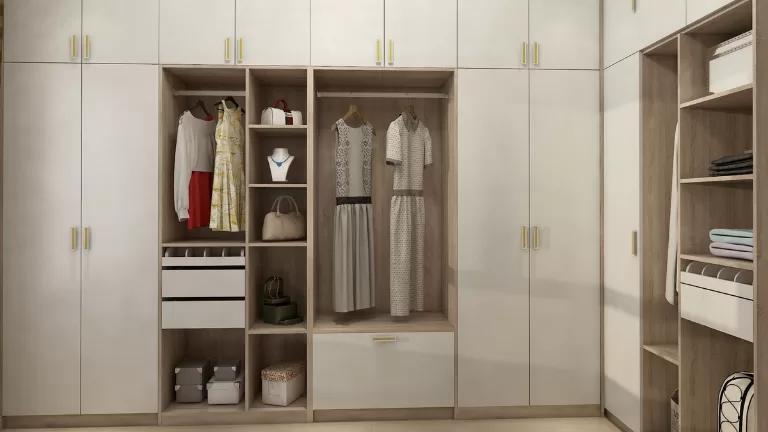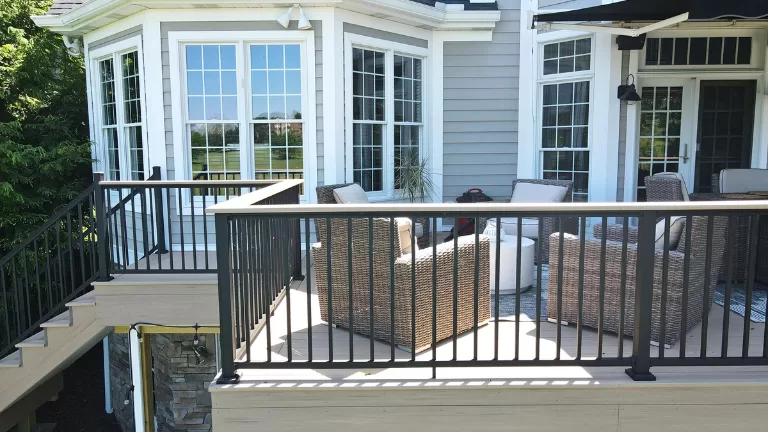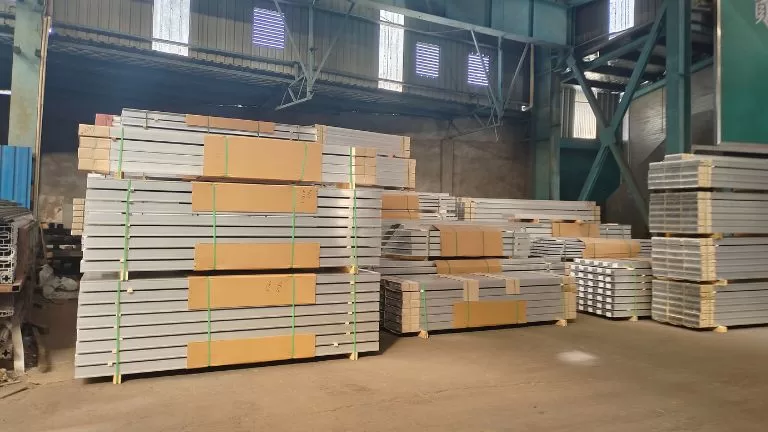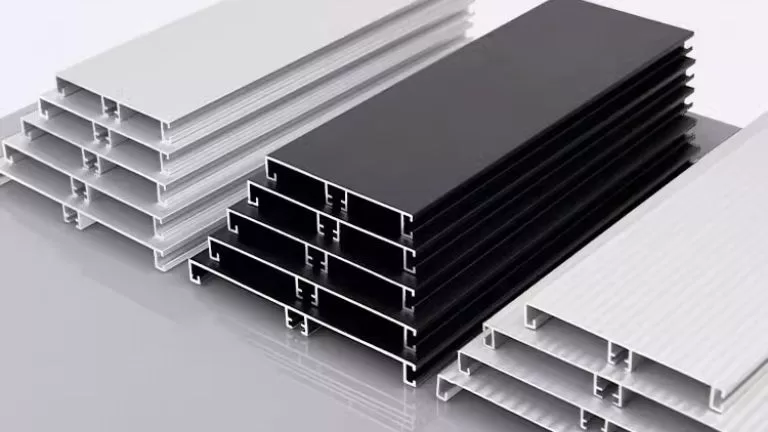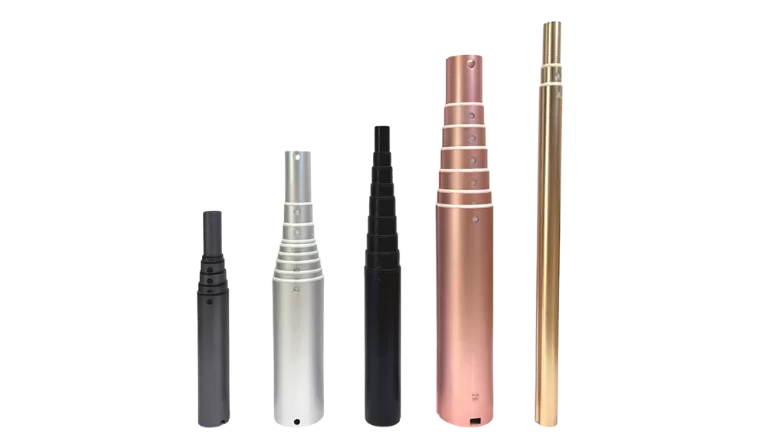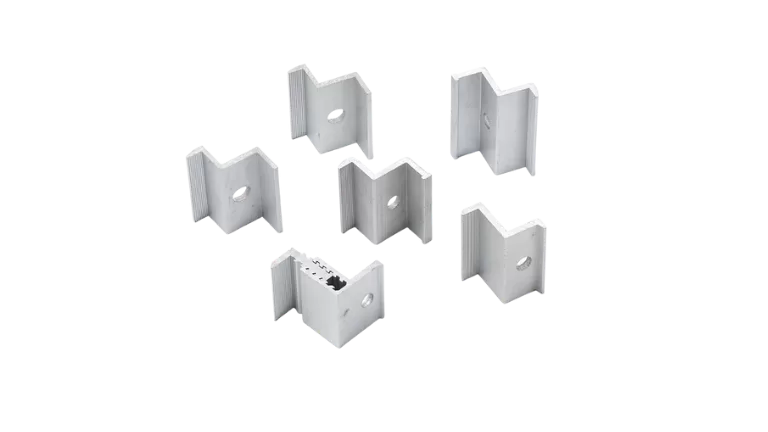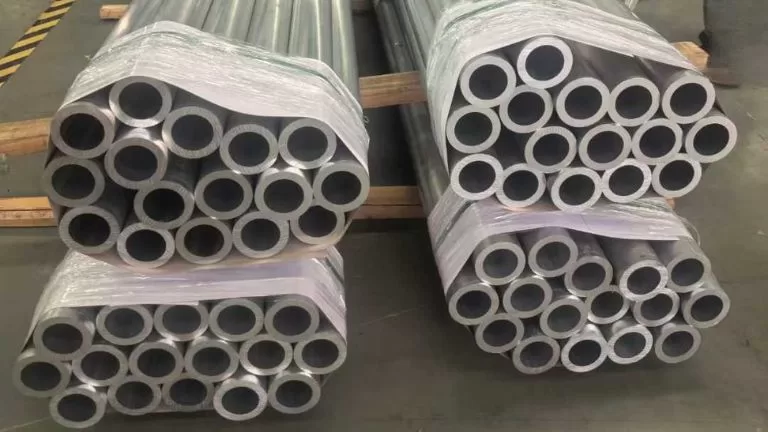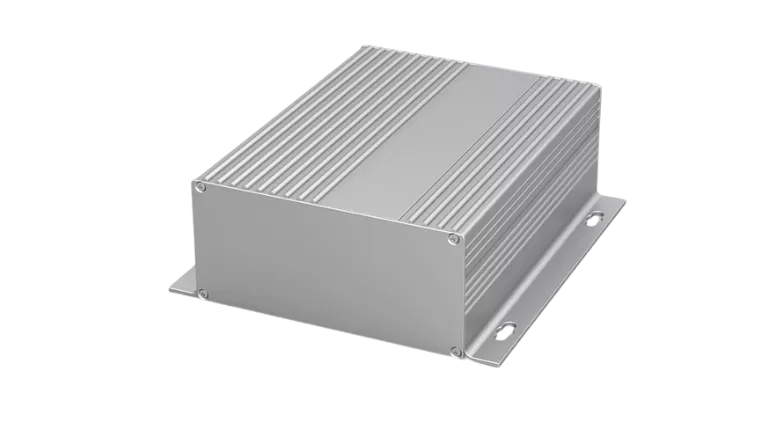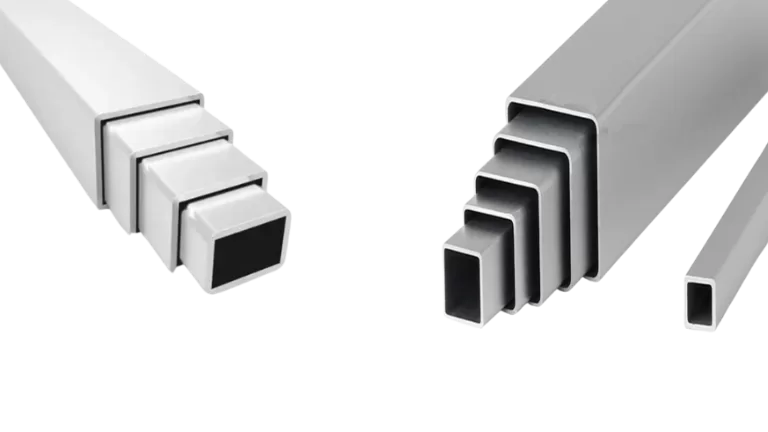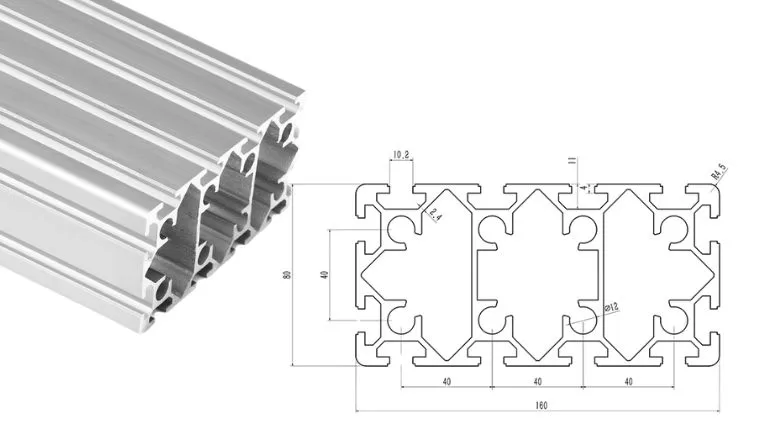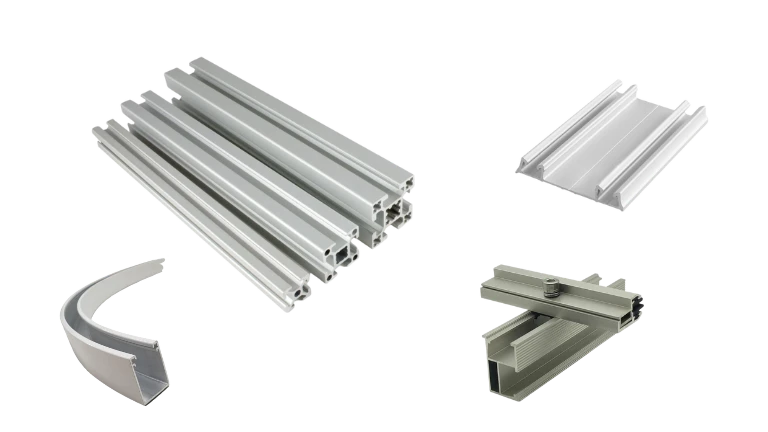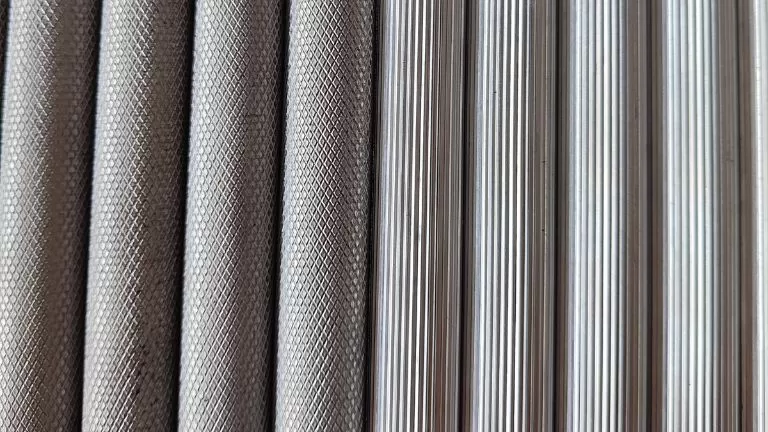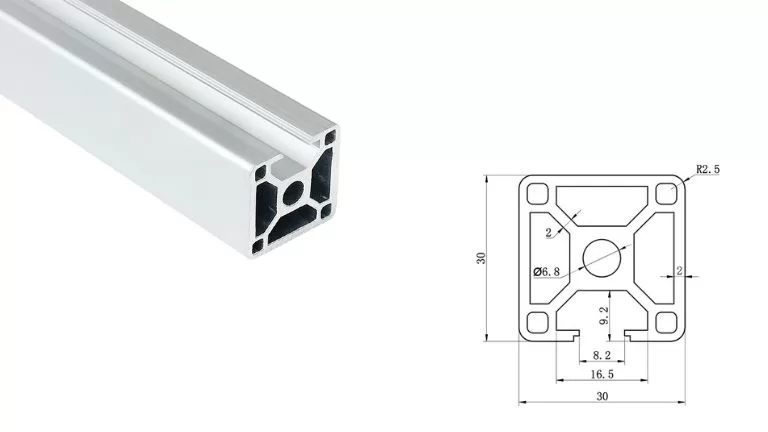Custom Extruded Triangle Aluminum Tube
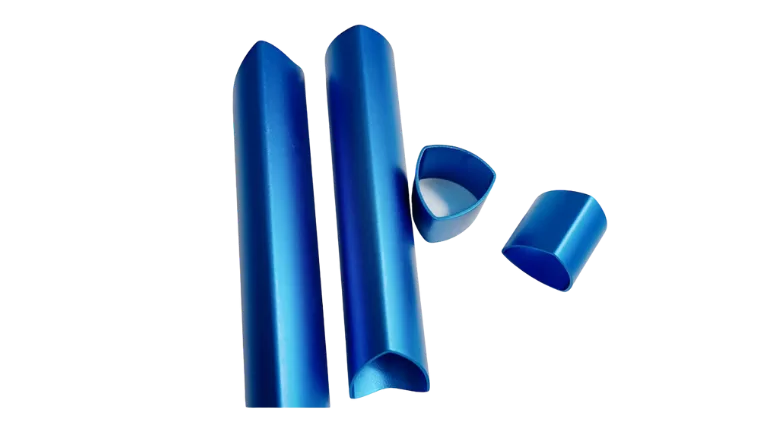
HTS focuses on customized triangle aluminum tubes. We provide comprehensive solutions from mold development to rapid shipment, guaranteeing superior quality and dependable performance.
- Tailored Mold Engineering: Our in-house team custom designs molds for precise triangular tube profiles to your specifications.
- Robust Extrusion Capability: With 40 high-efficiency extrusion lines, we maintain excellent dimensional accuracy and consistent product quality.
- Versatile Surface Finishing: Options like anodizing and powder coating enhance both durability and appearance of your triangle tubes.
- Optimized Production: Our streamlined processes and efficient logistics ensure prompt delivery and trustworthy service every time.
Triangle Aluminum Tube
Triangular aluminum tube is a hollow extruded aluminum tube with a triangular cross-section, typically manufactured from high-quality aluminum alloys using an aluminum extrusion process. This unique geometry provides excellent mechanical properties and broad application potential in design and functionality.
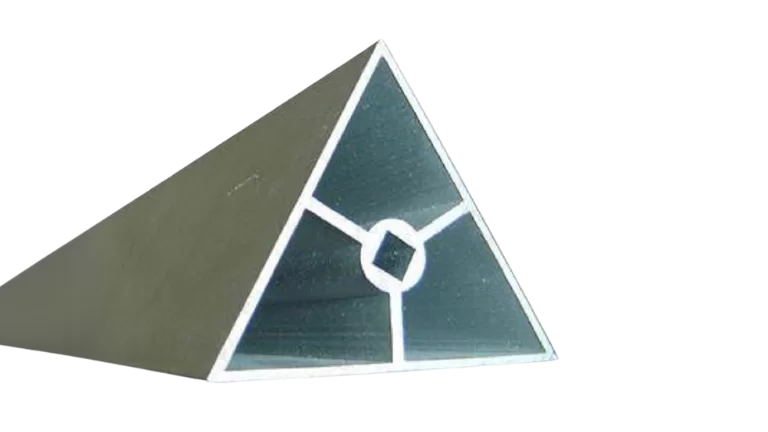
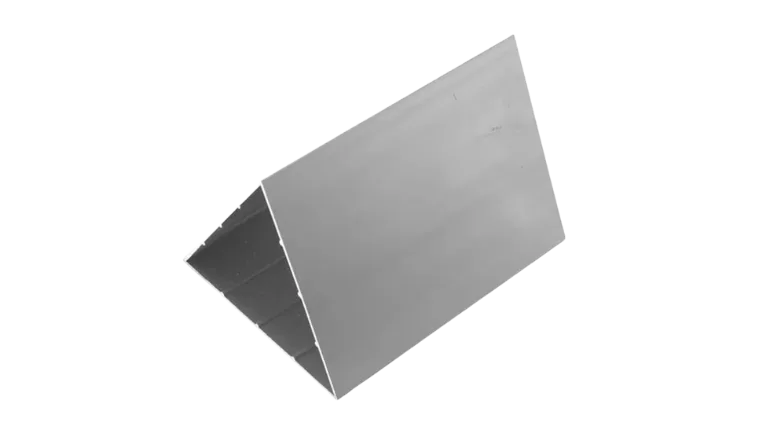
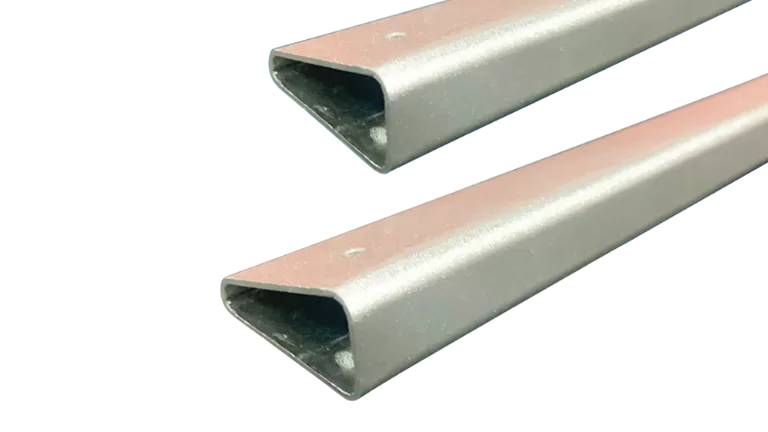
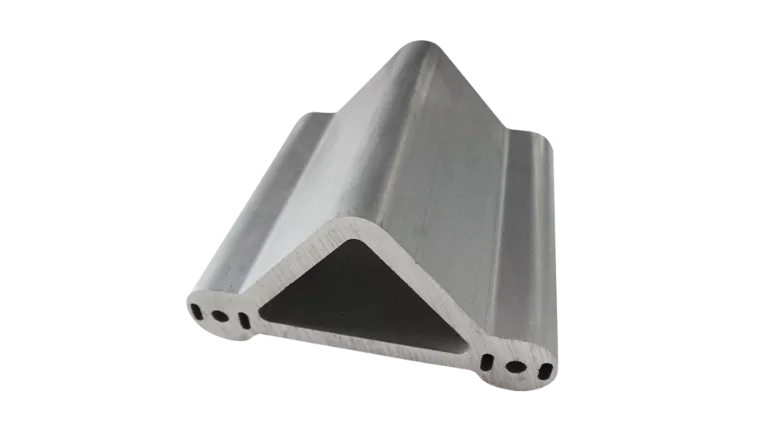
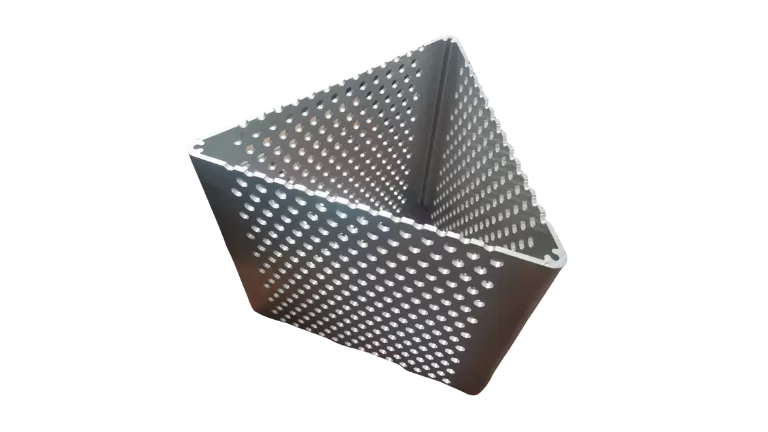
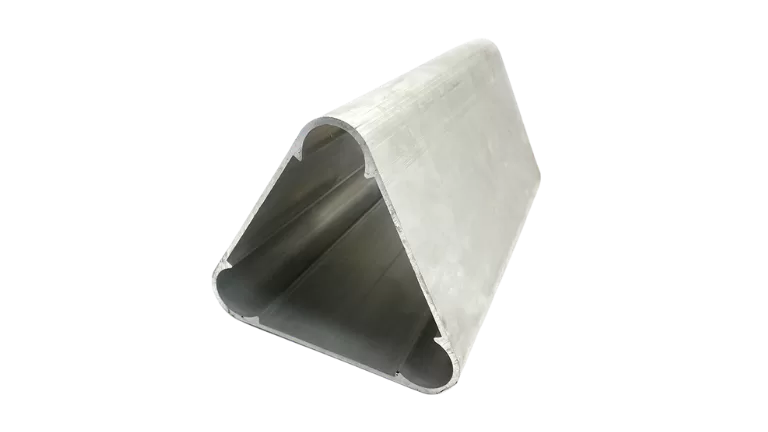
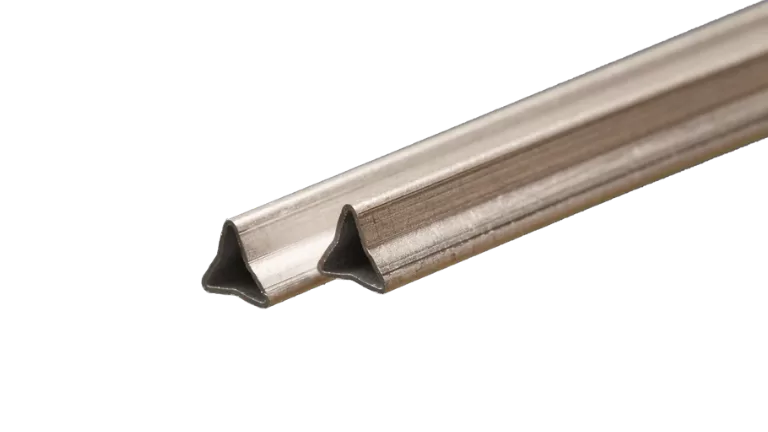
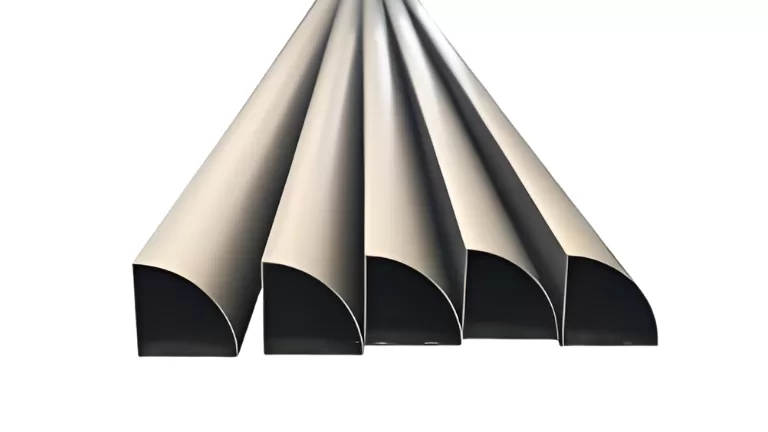
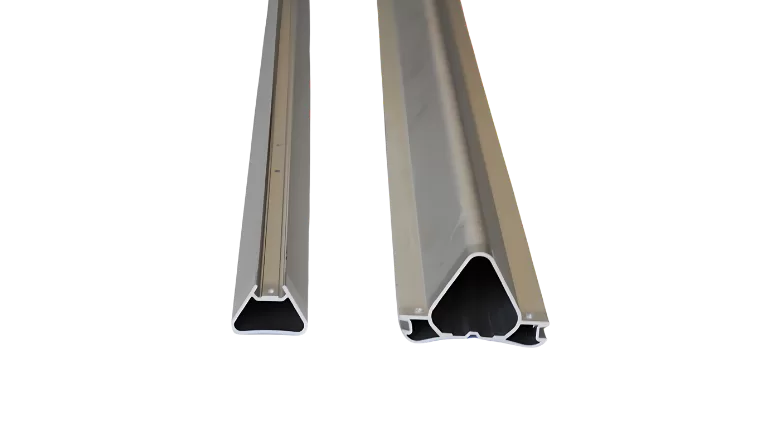
Triangle Aluminum Tube Specifications
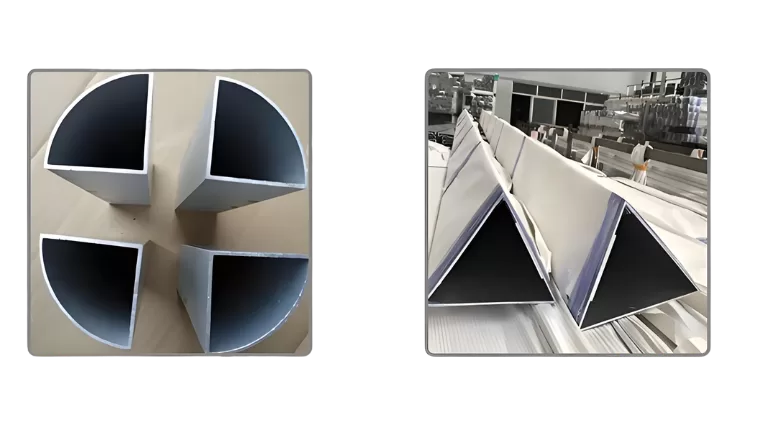

| Parameter | Specification Options |
|---|---|
| Material | 6063, 6061, 6005, or as specified |
| Outer Side Length | 10 mm - 200 mm (customizable) |
| Wall Thickness | 0.7 mm - 10 mm (customizable) |
| Length | Up to 6 meters (custom lengths available) |
| Tolerance | +/- 0.1 mm or as required |
| Angle | Standard 60-degree, 90-degree, or as customized |
| Surface Treatment | Anodized, Powder Coated, Mill Finish, etc. |
| Color | Silver, Black, White, Customized RAL colors |
| Alloy Temper | T5, T6, or as specified |
Typical Alloy
Triangle aluminum tubes are commonly manufactured using two types of aluminum alloys: 6061-T6 and 6063-T5. This shape is frequently selected for both standard and custom aluminum extrusion projects, making it a popular choice across various industries and applications.
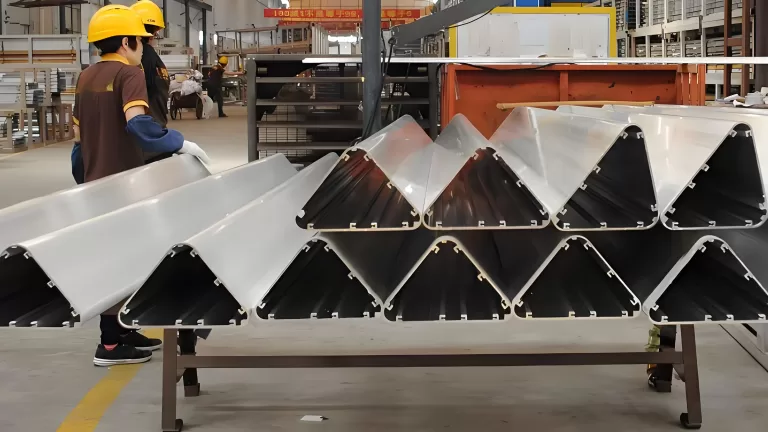
6061-T6
6061-T6 offers high strength (ultimate tensile strength around 290 MPa, yield strength about 240 MPa), excellent machinability, and good corrosion resistance, making it suitable for heavy-load structures, frames, and components that require strong mechanical properties. It is also widely used in automotive and aerospace industries.
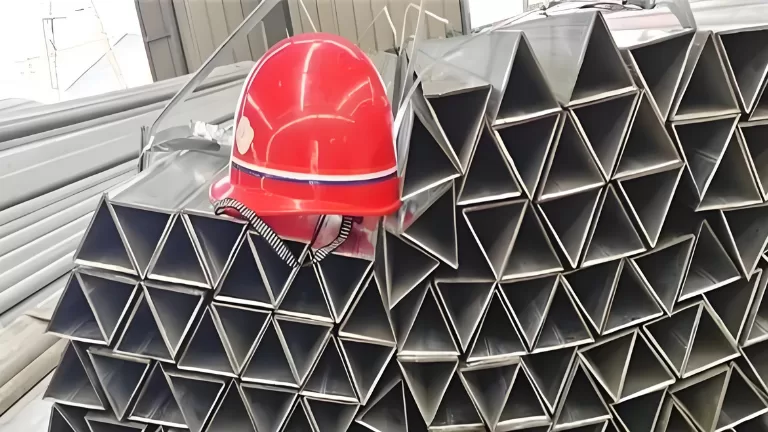
6063-T5
6063-T5, with a slightly lower strength (ultimate tensile strength around 190 MPa, yield strength about 160 MPa), is more economical and highly favored for its superior surface finish, good formability, and ease of extrusion. This makes 6063-T5 ideal for architectural applications, decorative structures, and general-purpose framing.
Widely Usage Scenarios
Triangle aluminum tubes are widely used in architecture, transportation, industry, and furniture.In architecture, they serve as decorative elements, structural frameworks, and support systems.
In transportation, they are used in vehicle frames and lightweight components.
In industrial settings, triangle aluminum tubes are chosen for machine structures and equipment supports.
In furniture, they add both strength and a modern aesthetic to designs such as tables, chairs, and shelving.
Core Advantages
1. Structural Efficiency: The double-angle design distributes stress more effectively, providing over 30% higher load-bearing capacity compared to single-angle profiles.
2. Easy Installation: Fewer connectors are required, which reduces assembly costs.
3. Versatility: Compatible with various processing methods including welding, riveting, and bolted connections.
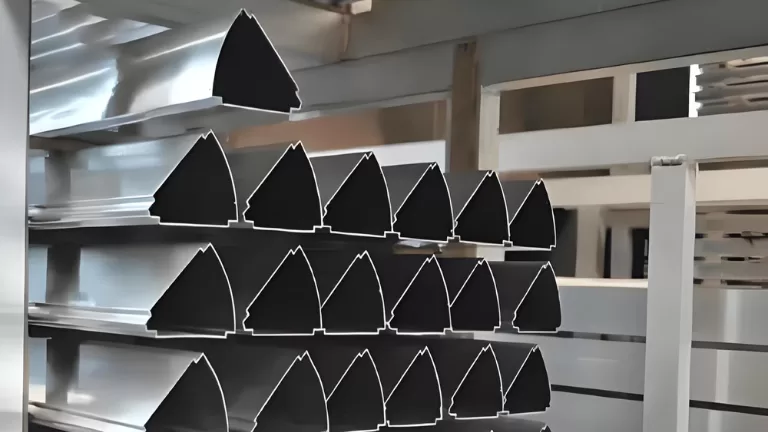
Mold Design and Development
We specialize in designing and manufacturing extrusion molds specifically for triangle aluminum tubes. Our in-house team collaborates with clients to create custom molds tailored to their drawings or samples, ensuring the final product meets precise specifications and application needs. The mold development process usually takes around 7 days, after which we supply triangle tube samples for client review and approval prior to mass production.
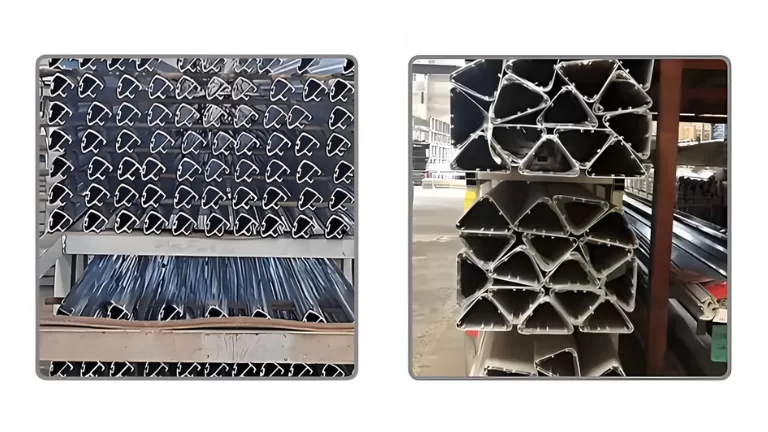
Triangle Aluminum Tube Extrusion
Our facility is equipped with over 40 modern extrusion lines, including a robust 6000-ton press, dedicated to producing triangle aluminum tubes in a wide range of sizes and specifications. This state-of-the-art equipment allows us to manufacture both standard and custom triangle tube profiles, tailored to diverse requirements across industries such as construction, transportation, and furniture. Our flexible production process ensures consistent quality and efficiency, meeting the needs of various applications from structural frameworks to decorative and precision components.
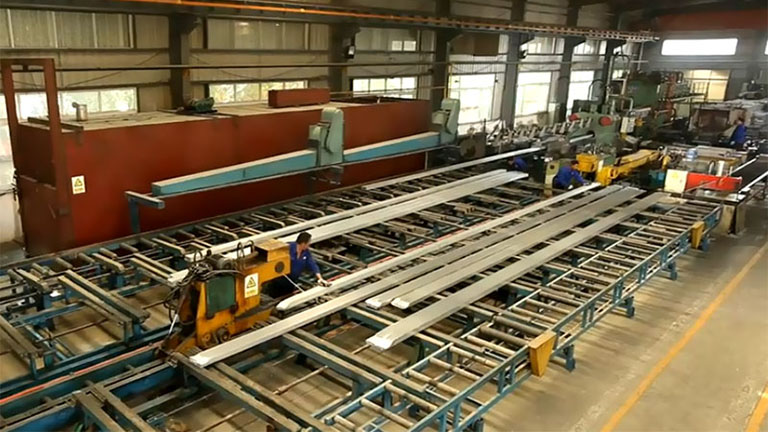
Triangle aluminum tubes can be finished with a variety of surface treatments to enhance appearance, durability, and corrosion resistance. Available options include anodizing (with a wide range of color choices), electrophoretic coating (for superior corrosion protection), and wood grain transfer printing (to provide a realistic wood-like appearance).
In addition, powder coating offers a durable, customizable finish in various colors and textures, while polishing or brushing can create a smooth or matte metallic look.
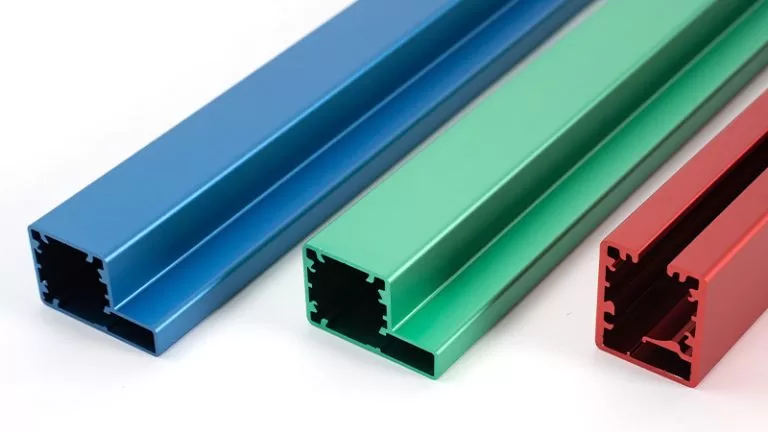
Custom surface finishes can also be applied to meet specific design or functional requirements in architectural, industrial, or decorative applications.
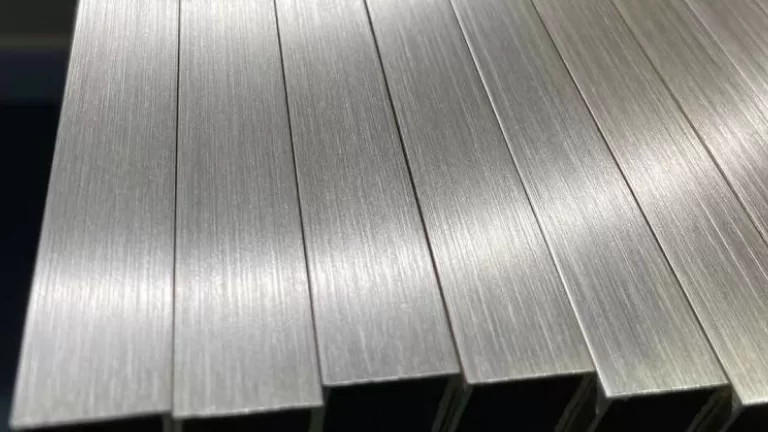
To deliver fully customized triangle aluminum tube solutions, we provide a comprehensive range of post-extrusion processing services. Our capabilities cover CNC machining, milling, threading, drilling, precision cutting, punching, and welding, as well as assembly to meet complex structural requirements. For branding and identification, we offer additional options like silk-screen printing and laser engraving. These versatile processing services enable us to supply ready-to-install triangle tubes, precisely tailored to our clients’ designs and specifications, ensuring flexibility, quality assurance, and reliable project delivery.
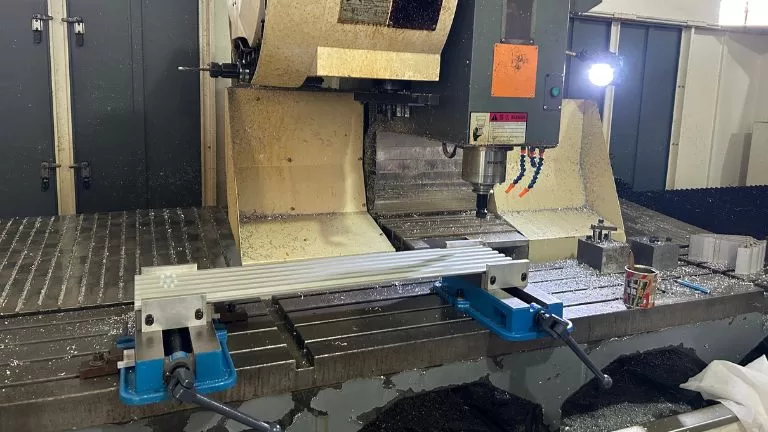
RFQ of Triangle Aluminum Tube
1. High Load Applications: Choose 6061-T6 alloy with a wall thickness of ≥3mm.
2. Corrosive Environments: Prioritize 3105 alloy with anodized surface treatment.
3. Cost-Sensitive Projects: 6063-T5 offers an economical solution.
The heat treatment of aluminum extrusions determines their mechanical properties, strength, and suitability for specific applications. Among the various heat treatment methods, T5, T6, and T66 are the most commonly used. Here’s an in-depth look:
| Heat Treatment State | Cooling Method | Strength | Key Features and Benefits | Applications |
|---|---|---|---|---|
| T5 | Air cooling (fan) | Moderate | Adequate strength, good dimensional stability, used for architectural purposes. | Windows, doors, curtain walls, building structures. |
| T6 | Water quenching (fast) | High | Higher strength and hardness, ideal for industrial and structural uses. | Automotive, aerospace, machinery, transport parts. |
| T66 | Water quenching (fast) | Very high | Optimized mechanical properties for higher strength and performance demands. | Automotive, rail transportation, high-end machinery. |
Other Heat Treatment States
- T4: Solution heat-treated and naturally aged. Used in applications requiring intermediate strength and enhanced formability.
- T7: Overaged for better stress-corrosion resistance, often used for aerospace and marine purposes.
- O (Annealed): Very soft condition suitable for extensive forming or bending requirements.
- F (As-Fabricated): No heat treatment applied, used in non-critical applications with low strength requirements.
Aluminum extrusions undergo various surface treatments to enhance aesthetics, corrosion resistance, and functionality. Here are the common surface treatment methods used in the industry:
Main Surface Treatment Methods
Anodizing (Oxidation)
- Process: A controlled electrochemical process that forms a protective oxide layer on the aluminum surface.
- Features:
- Provides a durable, corrosion-resistant, and environmentally friendly finish.
- Produces a metallic finish with a variety of natural tones (e.g., silver, black, bronze).
- Improves surface hardness and protects against scratching.
- Applications: Architectural frames, decorative profiles, heat sinks.
Electrophoresis Coating (E-Coating)
- Process: After anodizing, the aluminum is coated with paint using an electrochemical process.
- Features:
- Enhances corrosion resistance and offers a smooth, glossy finish.
- Provides more color and texture variation compared to anodizing alone.
- Applications: Furniture profiles, indoor architectural components.
Powder Coating
- Process: Electrostatic application of powder paint, followed by curing under high temperature to form a solid coating.
- Features:
- Wide variety of colors and textures.
- Excellent weather resistance and corrosion protection.
- Cost-effective and highly versatile.
- Applications: Outdoor frames, fences, railings, general industrial use.
PVDF Coating (Polyvinylidene Fluoride)
- Process: A specialized fluoropolymer coating is applied in multiple layers, commonly over a pretreated surface.
- Features:
- Exceptional weather resistance and UV stability.
- Highly durable, resistant to fading, chalking, and chemical damage.
- Ideal for long-term outdoor use.
- Applications: Curtain walls, high-performance architectural facades.
Wood Grain Transfer Printing
- Process: A heat-transfer printing process that applies a wood grain effect onto a pre-coated aluminum surface.
- Features:
- Mimics the appearance of wood while retaining aluminum’s durability.
- Lightweight and weather-resistant alternative to natural wood.
- Applications: Furniture, decorative coverings, outdoor panels.
Film Lamination
- Process: Adhesive application of a protective or decorative film onto the aluminum surface.
- Features:
- Provides a glossy, textured, or patterned finish.
- Often used for applications requiring specific textures like marble or leather effects.
- Applications: Interior decor, windows.
Pre-Treatment Processes
Prior to surface treatment, the aluminum surface can be pre-processed for specific textures or finishes:
Brushing/Polishing
- Removes surface imperfections and creates a smooth, reflective finish.
- Often used for decorative purposes.
Sanding/Grinding
- Produces a matte or satin finish by applying abrasives.
Shot Blasting/Sandblasting
- Sprays abrasives at high velocity to create a textured surface, often used before anodizing for a uniform appearance.
Stretching and Tension Leveling
- Straightens the aluminum profile and improves shape accuracy after extrusion.
Cost and Durability Comparison Table
| Treatment Method | Process Cost | Surface Durability | Weather Resistance | Applications |
|---|---|---|---|---|
| Anodizing (Oxidation) | Medium | Very Durable | High | Architectural frames, industrial parts. |
| Electrophoresis (E-Coating) | Medium-High | Durable | Medium | Furniture, indoor parts, decorative uses. |
| Powder Coating | Medium | Highly Durable | High | Outdoor frames, industrial fixtures. |
| PVDF Coating | High | Extremely Durable | Excellent | Curtain walls, high-end exteriors. |
| Wood Grain Printing | Medium | Moderate (topcoat dependent) | Medium | Decorative panels, furniture. |
| Film Lamination | Low-Medium | Moderate | Low | Indoor decorations, windows. |
| Brushing/Sandblasting (Pre-Treatment) | Low | Not Applicable (Preparation only) | N/A | Preparation for further treatment. |
. Anodizing (Oxidation)
- Common Colors:
Natural silver
Black
Champagne
Light bronze
Dark bronze
Gold
2. Electrophoresis Coating (E-Coating)
- Common Colors:
Black
Champagne
Light bronze
Dark bronze
Custom metallic colors
3. Powder Coating
- Colors:
Can match any color based on the RAL color chart.
Offers textures like matte, gloss, satin, and custom finishes.
4. PVDF Coating (Polyvinylidene Fluoride)
- Colors:
Also customizable using the RAL color chart.
High-end finishes with matte or glossy effects.
5. Wood Grain Transfer Printing
- Colors and Patterns:
Mimics various wood types (e.g., oak, walnut, teak, mahogany).
Custom patterns available based on provided samples.
6. Film Lamination
- Colors and Patterns:
Includes textures like marble, leather, and solid colors.
Custom finishes and patterns based on provided samples.
Pre-Treatment Options (Impact on Final Color)
- Brushing/Polishing: Produces smooth or reflective metallic surfaces.
- Sandblasting: Adds a rough, matte texture before the final surface treatment.
For custom aluminum extrusion projects, we accept a variety of drawing formats, including CAD files, STEP files, and PDF files. However, for extrusions that require additional machining processes, it’s recommended to provide STEP files, as they ensure precise 3D modeling for machining accuracy.
While PDF files are acceptable, converting them into CAD drawings may result in the loss of certain details, requiring us to manually redraw the design, which could increase lead time. For the fastest and most accurate quotation, we recommend providing CAD files (e.g., DWG/DXF) and STEP files to ensure efficient design evaluation and pricing.
Mold fees are an essential part of the custom aluminum extrusion process. Since every order requires a uniquely designed mold tailored to specific requirements, these molds cannot be used for other products. Therefore, the mold fee is necessary and non-negotiable.
We require 100% upfront payment of the mold fee before mold development begins to ensure timely production. However, as a token of appreciation for your support, we offer a refund of the mold fee or equivalent discounts once the order reaches a certain production volume. Specific policies can be discussed based on your order volume and collaboration details.
Our minimum order quantity (MOQ) varies depending on the size of the product. For smaller-sized products, the MOQ is typically 500kg, while for larger-sized products, it is 2 tons.
We will specify the exact MOQ requirements during the quotation process. If your order quantity does not meet the MOQ, we can still arrange production, but an additional fee will be applied to cover mold preheating and production setup time. Rest assured, this extra fee will be reasonable, and we aim to keep it as minimal as possible to ensure smooth cooperation.
Packaging can be customized according to your needs. Options include using protective film or paper to separate and protect the surface, or foam film for additional surface protection. Products can be palletized or packed into cartons, and the quantity per pallet or carton can be specified by the customer.
The standard packaging involves bundling several pieces together with plastic wrap and then securing them onto pallets. Any packaging requirements beyond the standard will be accommodated, and the associated costs will be clearly provided to the customer.
Mold production typically takes 7 days. After the sample is confirmed, producing a full container load of 26 tons generally requires 14 days for extrusion alone. If surface treatment is required, an additional 3 days will be needed. For machining, extra time will be required depending on the complexity and volume of the machining work. The exact additional time for machining will be determined based on the specific processing requirements.
Aluminum profiles are naturally corrosion-resistant due to the formation of a thin, protective oxide layer when exposed to air or water. This oxide layer is stable and self-repairing, meaning that even if the surface is scratched or cut (such as at exposed ends or during processing), the aluminum will not rust or corrode like iron or steel. Instead, the exposed areas will quickly form a new oxide layer, providing continuous protection against further oxidation.
With proper design, installation, and maintenance, aluminum profiles can last for decades, even in challenging environments. For example, untreated aluminum can easily withstand 20-30 years in outdoor applications, while profiles with surface treatments like anodizing or powder coating can last even longer, often exceeding 50 years. This makes aluminum an excellent choice for applications where durability and long-term performance are essential.
The price of aluminum profiles consists of several components: raw material costs, extrusion processing fees, surface treatment fees, machining costs, and additional packaging fees. Among these, the cost of aluminum as a raw material tends to fluctuate frequently, while other fees remain relatively stable. Due to these fluctuations, our quotations are typically valid for 7 days.
Pricing can be structured in different ways depending on the product and requirements. It can be calculated by weight (e.g., cost per ton), by length (e.g., cost per meter), or by piece (e.g., cost per unit). For products involving extensive machining, such as heat sinks, pricing is generally calculated on a per-piece basis to accurately reflect the additional processing costs. This flexible pricing approach ensures the quote is tailored to the specific needs of the customer.
We can manufacture aluminum profiles in compliance with technical requirements that meet European standards (EN), American standards (ASTM/AA), or other standards as specified by the customer. Custom production is tailored to ensure that the profiles meet the specific standard requirements requested.
Our production equipment is designed for the metric system. If the drawings provided are in the imperial system, we will convert them into metric units for production to ensure accuracy.
It is important to note that while we can machine imperial-threaded holes for fasteners, if you require us to supply matching imperial fasteners, they may not always be available in stock. Custom orders for imperial fasteners typically require a large volume for production. Please consider this when planning your project.
